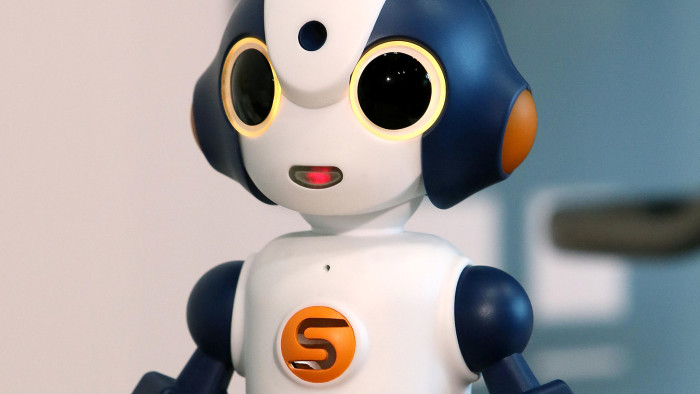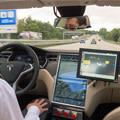Intelligent robots raise anxieties over future jobs

Simply sign up to the World myFT Digest -- delivered directly to your inbox.
In a shiny demonstration room in a Tokyo office, a small robot called Sota swings its arms enthusiastically like a small child as it talks to the humans clustered around it. NTT Data, the Japanese IT services company, is planning to dispatch these little table-top robots into care homes for the elderly, where they will be able to talk to the residents as well as control their lights, check their blood pressure and remind them when to take their pills.
With its big round eyes and childish voice, Sota is far from threatening. Yet many people are increasingly fearful of the trend that Sota represents: a fresh wave of technological progress that some believe will render many human workers redundant.
The idea that vast numbers of jobs will soon be automated has even permeated the walls of the world’s central banks. Late last year, both Andy Haldane, the Bank of England’s chief economist, and Ignazio Visco, governor of the Bank of Italy, gave speeches exploring the economic consequences of the “second machine age”, as MIT’s Erik Brynjolfsson and Andrew McAfee have called it.
The trigger for these fears is the development of machines and computers that can be substituted for human brains as well as brawn — threatening the jobs of truck drivers, analysts and financial journalists.
“The smarter machines become, the greater the likelihood that the space remaining for uniquely human skills could shrink further,” Mr Haldane told an audience of British trade unionists in November.
He estimated that about 15m jobs in Britain, almost half the total, were at risk of automation. Similarly, Mr Visco told his audience that up to 50 per cent of jobs in the major European countries were estimated to be at risk.
Not everyone is panicking, however. For one thing, we have been here before, as David Autor, an economics professor at MIT, points out.

In a recent paper, he noted that fears of automation and joblessness were running so high in the 1960s that president Lyndon B Johnson created a special “Blue-Ribbon National Commission on Technology, Automation, and Economic Progress” to examine the consequences for jobs and living standards. The national commission eventually concluded that mass unemployment was not a risk: “The basic fact is that technology eliminates jobs, not work,” it said.
The commission was proved right. During the wave of automation in the 1960s, and those that preceded (and succeeded) it, the overall level of employment held up because new jobs replaced old ones. There have been winners and losers as middle-skilled jobs — such as routine secretarial and manufacturing tasks — have declined, but the total proportion of people in work has not budged much.
In the UK, for example, technology has improved productivity by about a third each generation, yet the employment rate is roughly the same now as it was in the early 19th century.
“We could be talking about spinning jennies or we could be talking about cyborgs — from an economic perspective it’s kind of the same,” said Toby Nangle, asset manager at Columbia Threadneedle Investments.
“I think the onus on people saying ‘this time is different’ is to make the case why it is different.”
Those who say this time will be different, such as Martin Ford, author of Rise of the Robots, believe this wave of technological change will be so profound it will reach into every part of the labour market and skew the gains to only the very richest.

So far, there is not enough evidence to know whether Mr Nangle or Mr Ford will be proved right. Indeed, there is no sign at all yet that technology is supercharging productivity by supplanting workers with machines.
If anything, the global economy has the opposite problem. Growth in labour productivity — the amount of output generated per worker — has been slowing in the developed world and big emerging economies such as China and Brazil. The slowdown is partly the consequence of the financial crisis, but in some places it began sooner: labour productivity growth in the US started to decline in 2005 as the initial effects of the IT revolution began to fade.
Japan is a more extreme example: in spite of its reputation as the home of robotics, Japanese productivity is below the OECD average and far lower than countries such as the US and Germany.
Of course, it may be that the technological breakthroughs have yet to reach the workplace en masse. Driverless cars are not yet replacing jobs, for example, but it is easy to believe they eventually could.
In some ways, the Sota robots are pioneers: how quickly they are adopted by Japanese care homes might give us a sense of when — and whether — to worry about the “second machine age”.



Comments